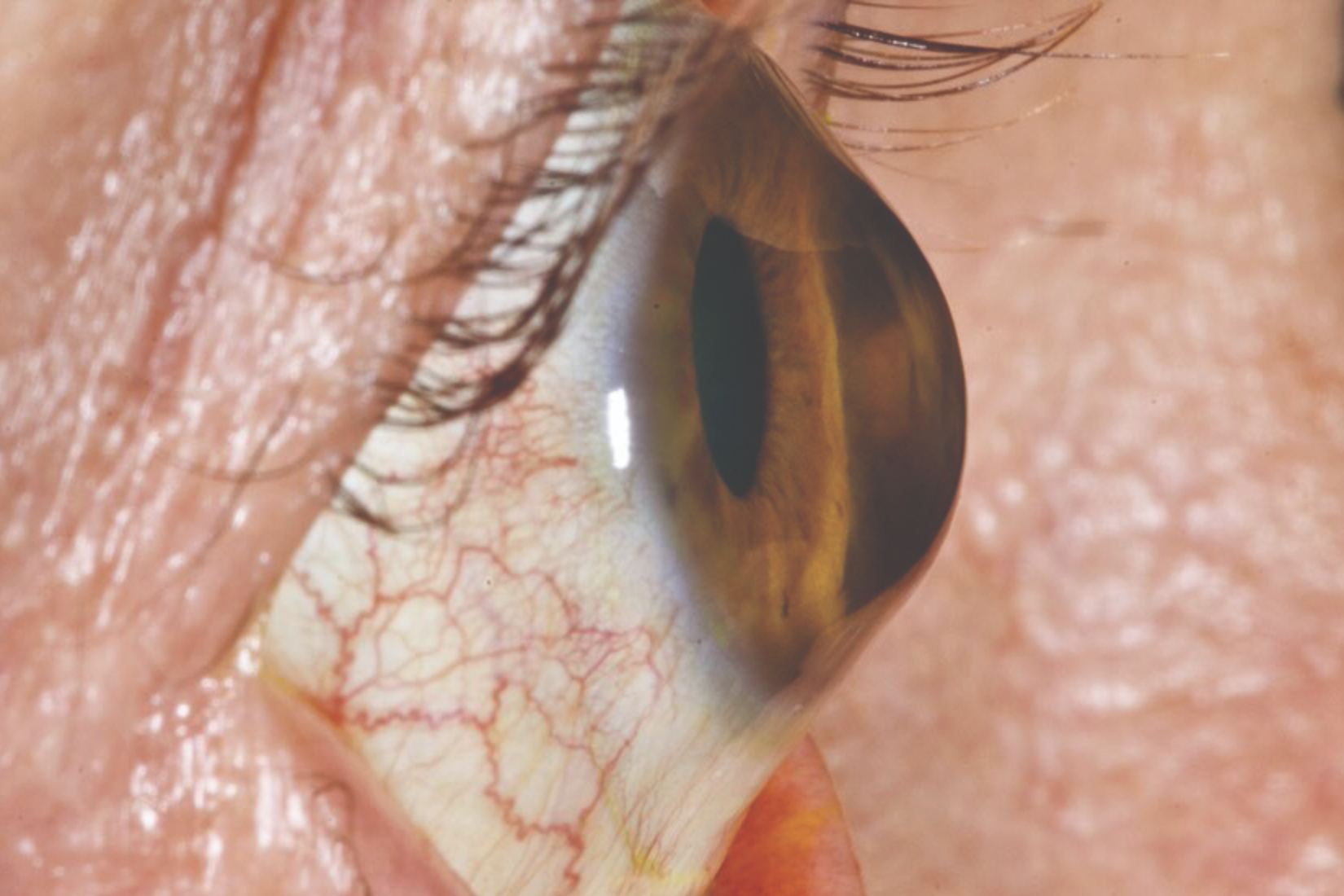 |
| Socioeconomic status plays a role in keratoconus severity and progression. Photo: Irving Martínez Navé, OD. |
Determining the social factors that influence disease is critical in identifying ways to reduce incidence and improve outcomes. In a recent study, researchers set their eyes specifically on the social determinants of health for keratoconus and their relationship with disease severity and progression. Several factors were found to be associated with more severe disease as well as with corneal transplantation.
The retrospective cohort study included 1,038 patients with keratoconus using data gathered from an electronic health record. The primary outcomes for the study were severe keratoconus at presentation (steep keratometry ≥52D), disease progression (≥0.75D increase from baseline to the most recent visit) and corneal transplantation. Comorbidities and various sociodemographic and socioeconomic traits were analyzed, including race, primary language, insurance payer (commercial, Medicaid or Medicare) and employment status.
Patients on Medicaid were found to be more likely to have severe keratoconus, which researchers noted was independent of social and clinical confounders (odds ratio: 1.94). Medicare and Medicaid recipients were also more likely to require transplantation than commercially insured patients. In addition, they found men significantly more likely than women to have keratoconus progression.
“Other socioeconomic factors, including non-white race, limited English proficiency and unemployment, were associated with worse disease in univariate but not multivariate analysis,” the researchers wrote in their paper. The biggest concern, they suggest, lies in the evident disparities in healthcare usage and clinical outcomes observed in those of lower socioeconomic status.
“Non-white race and low socioeconomic status are both independently associated with vision impairment, putting poor ethnic minorities at highest risk,” they wrote in their Cornea paper. “These populations tend to underutilize preventive eye care and bear a disproportionate burden of preventable, blinding conditions, such as glaucoma and diabetic retinopathy.”
The data from this study suggests a need to develop keratoconus prevention strategies for socioeconomically marginalized patients, as they were shown to face a higher risk of severe disease, progression and corneal transplantation.
Ahmad TR, Kong AW, Turner ML, et al. Socioeconomic correlates of keratoconus severity and progression. Cornea. February 19, 2022. [Epub ahead of print]. |


